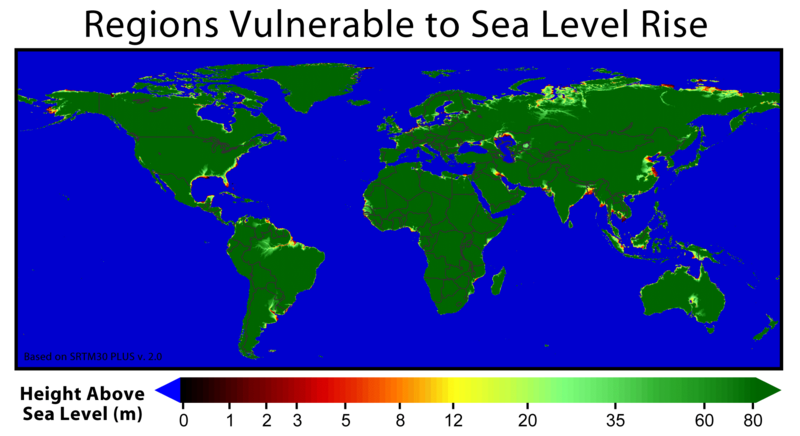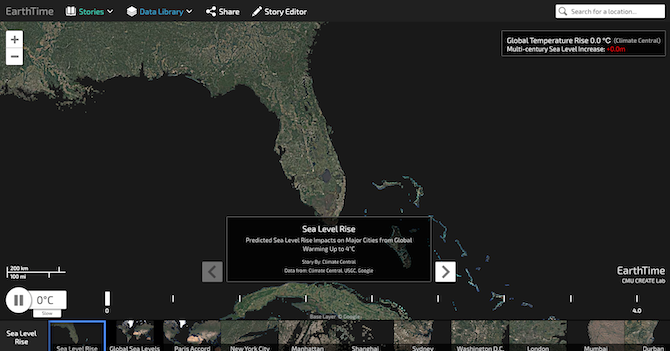

The image will be stretched to fit between the longitude and latitude coordinates you defined above. This must be an image that already exists on your computer. Image: Choose this option to browse for a specific image file to be floated in Google Earth to represent the sea surface.Ocean Blue: Choose this option to use a solid blue color to represent the sea surface.Color or Image Used to Represent Sea Level:.Ending Date: In the same manner, choose the ending date for the animation.
#Earthtime sea level windows
(Note that RockWorks will assume you are entering the dates in a format consistent with the date format established in the Windows system settings on your computer.) Or, click to select any of the fields and type in the desired day, month, and year for the animation starting date.
Starting Date: Click the "v" button to the right to select a date from the pop-up calendar. These can be specific or arbitrary dates. Dates / Times: These define starting and stopping dates for the animation. The increments are still entered as positive values. ! Note: The starting elevation can be above the ending elevation to show a decreasing level in the animation, such as a reservoir draining. For example, if the starting elevation is 0, the ending elevation is 30, and the increment is 0.5, there will be 61 steps including the endpoints. This will determine the number of "steps" in the animation. Elevation Increments (Meters): Type in the meter increments at which the sea level image is to be floated. For example, to represent a plane at sea level 30 meters above present sea level, you would enter 30. Ending Elevation (Meters): Type in the elevation at which the image is to float at the end of the animation. Starting Elevation (Meters): Type in the elevation at which the image is to float at the beginning of the animation. Elevations: These define the elevations at which the sea level image will be floated in the animation. Maximum (Northern Border): Type in the decimal latitude for the northern edge of the image. Southern latitudes must be entered as negative values. Minimum (Southern Border): Type in the decimal latitude for the southern edge of the image. Maximum (Eastern Border): Type in the decimal longitude for the eastern edge of the sea level image. Western longitudes must be entered as negative values. Minimum (Western Border): Type in the decimal longitude for the western edge of the sea level image. RockWorks will stretch the image to fit between the coordinates you define. 

Area of Interest: These settings define the edges of the sea level image that you'll be "floating" in Google Earth.This animation can be played within Google Earth.įloating Image Maps using 2 Corner Pointsįloating Image Maps - Time-Based Animationsįeature Level: RockWorks Basic and higher Create an animation of the image floating at incremental elevations through time in Google Earth.Read a user-created raster image, and load start/end elevations, start/end dates, locations, and elevations from the input menu.RockWorks | Graphics | Animate | Google Earth Sea-Levels Google Earth Time-Based Sea Level Animations Google Earth Time-Based Sea Level Animations







 0 kommentar(er)
0 kommentar(er)
